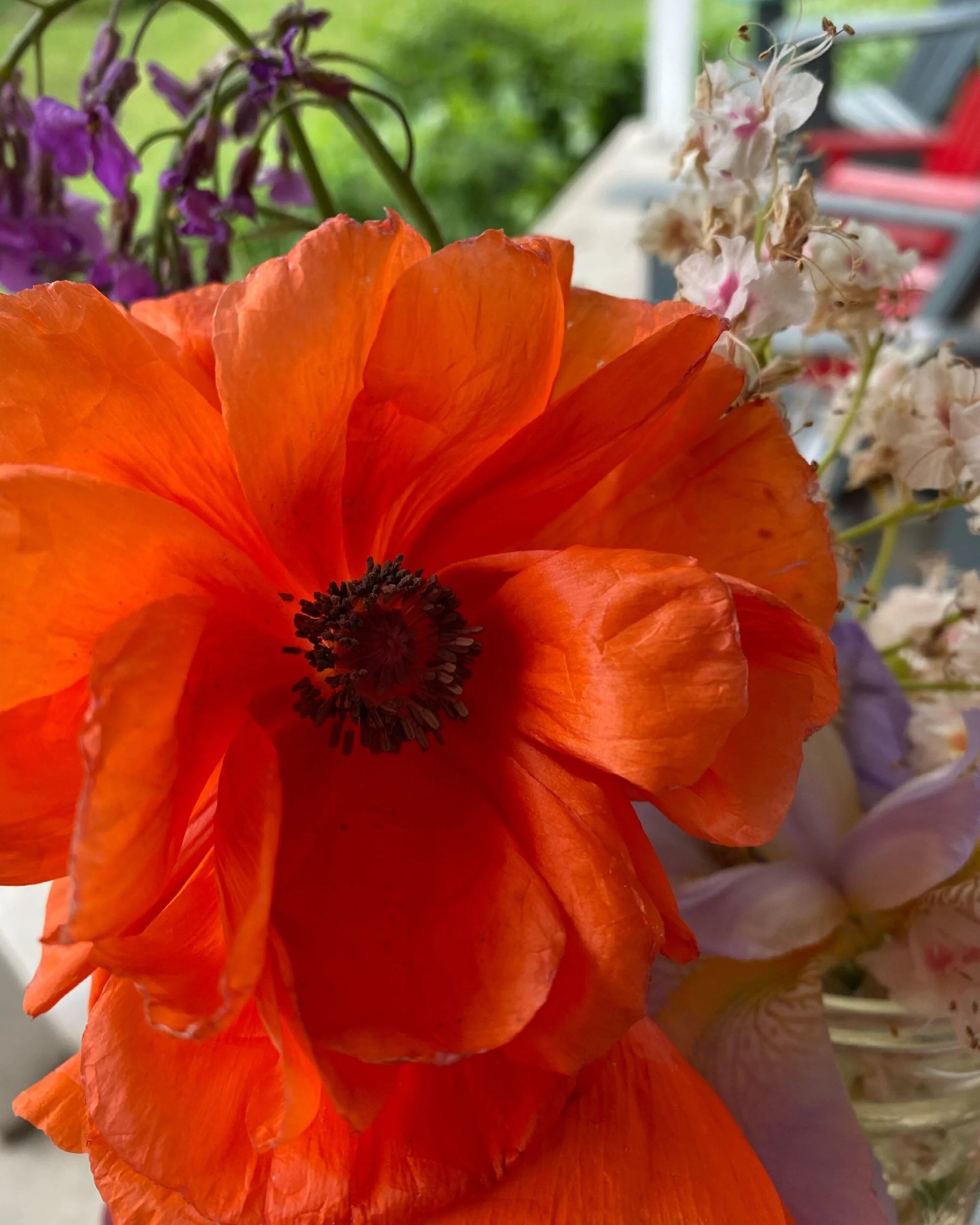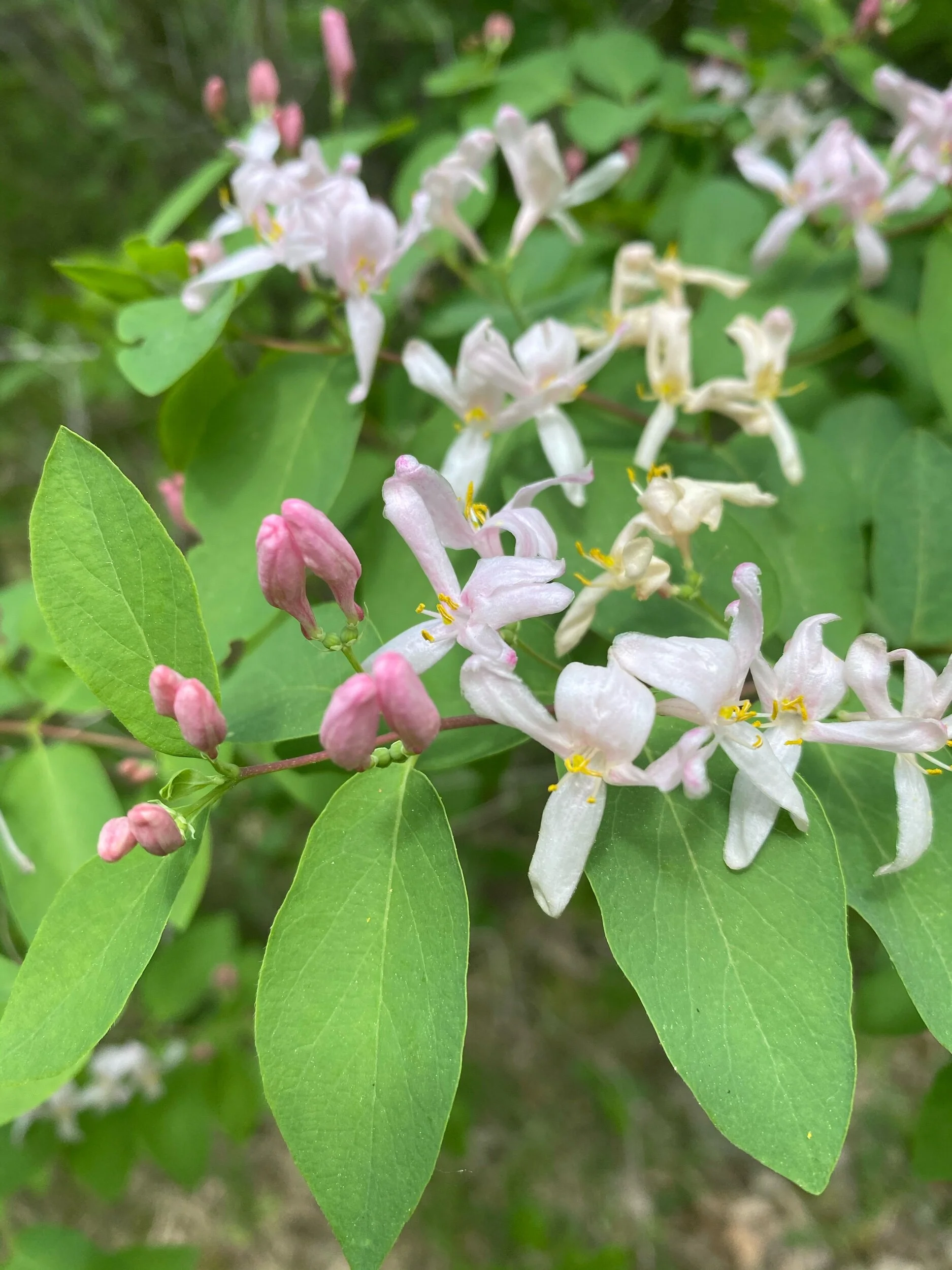If you are looking for resources, songs and poems that have been shared previously on the blog, you can use the search tool on this page.
Ponds and marshlands are coming to life. These rich ecosystems are home to many different species. I invite you to find a pond or marshland nearby and go exploring! There is so much to see and wonder at.
Spend the week exploring your local ponds, streams and / or wetlands. Try a new one each day or revisit the same one every day - you will be amazed at how much there is to see and appreciate.
The marshland around the pond is muddy, so watch your step. The sun is warm, and the breeze rustlers in the dry reeds as we settle down to look and listen.
Living things are all around us, moving and growing. They fly and swim and float and hop - so many different kinds of creatures and plants. And it must be a kind of magic, because we can see under the water all the way to the bottom of the pond without even getting wet.
Open your eyes wide now and watch the water, the ground and sky. You never know what you might see down at the pond.
~ Excerpt from In the Pond by Ermanno Cristini & Luigi Purricelli
SEASONAL POEMS:
The Tadpole
Underneath the water weeds
Small and black, I wriggle,
And life is most surprising!
Wiggle! Waggle! Wiggle!
There’s every now and then a most
Exciting change in me,
I wonder, wiggle! Waggle!
What I shall turn out to be!
~ Elizabeth Gould
Twenty Froggies
Twenty froggies went to school
Down beside the rusty pool;
Twenty little coats of green,
Twenty vests all white and clean.
”We must be in time,” said they.
”First we study, then we play;
That is how we keep the rule,
when we froggies go to school.”
Master Bullfrog, brave and stern,
Called the classes in their turn;
Taught them how to nobly strive,
Also how to leap and dive:
Taught them how to dodge a blow
From the sticks that [kids might] throw.
Twenty froggies grew up fast,
Bull-frogs they became at last.
Polished in a high degree,
As each froggies ought to be,
Now they sit on other logs,
Teaching other little frogs.
~ George Cooper
SEASONAL SONG:
A Little Green Frog
A little green frog once sat in a pool
The sun was so hot and the water so cool
She stayed in the pool the whole day long
Singing her dear little sweet little song,
“Quaggery, quaggery, quaggery-dee
No-one was ever so happy as me!”
NATURE ADVENTURES & PROJECTS
Pack your backpack with a snack, water, and extra clothes and get ready to hit the trail (or your backyard!).
Here are some ideas that you might want to try out this week:
POND SCAVENGER HUNT
NATURE ADVENTURE
Go on an adventure to a local wetland or pond. Can you find all of the items on the Pond Scavenger Hunt?
PROJECT
Make Up a Scavenger Hunt
Draw pictures of the creatures and plants that you saw on your Nature Adventure at the pond. Maybe you saw some plants or creatures that were not on the scavenger hunt - add those to your new scavenger hunt. Share your scavenger hunt with a friend.
PROJECT
A Simple Pond or Stream Study
Some of the common invertebrates found in ponds, swamps or streams are easy to catch!
Illustration Credit: Lyanne Mitchell
Here are some of the invertebrates you might come across:
stonefly larvea
mayfly larvae
caddisfly larvae
damselfly nymphs
dragonfly nymphs
water penny larvae
predaceous diving beetles
whirligig beetles
water scorpions
giant water bugs
water striders
water boatmen
backswimmers
mosquito larvae
black fly larvae
leeches
crayfish
tadpoles
Click the illustration below to download the ID file.
Illustration Credit: Backwoods Mama
Materials:
Pail (preferably with a lid)
Small aquarium (or large glass bottle)
Small plastic viewing jars
Fine mesh nets
Magnifying glass
Instructions:
Take your pail, plastic containers and net to a nearby pond, swamp or shallow stream.
Dip your net down into the dense aquatic vegetation.
When you catch something like a ‘wiggling bug,’ put it in your pail.
Add a little aquatic vegetation to the pail, too.
Continue until you have a variety of different creatures. (Try different parts of the pond).
If you are catching creatures in a stream, many will be attached to the underside of rocks. You can push them gently off the rock into your bucket.
Transfer the creatures into the viewing jars for a close-up look.
Let the creatures go or take them home and transfer them into an aquarium or large glass bottle to observe. Keep them out of direct sunlight.
Change about one-third of the water every couple of days with fresh swamp or stream water.
Have a look every day at what’s going on. Have new creatures hatched out of eggs? Have some creatures fallen prey to predators?
You may wish to sketch the creatures in your nature journal.
This is the small pond behind my house. Can you spot the small turtle on the log?
Find more pond study resources here.
Numeracy Connections
What is the smallest / biggest object you observed?
Create a chart arranging the objects from smallest to biggest.
Literacy Connections
Encourage your child to talk about their observations.
Develop a vocabulary list of words based on your child’s observations.
FROG & TURTLE COUNT
NATURE ADVENTURE
Bullfrog
Frogs and turtles are an important part of a healthy pond / wetland ecosystem. On your nature adventure, see how many frogs you can find. Count the number of frogs and turtles you see. Where there more frogs or turtles? Notice where you saw these creatures - on land? In the water? Sitting on a log or lily pad?
Painted turtle
PROJECT
Materials:
A rock that fits in your palm
Green felt / construction paper / cardboard
Googly eyes
Green and yellow paint
Small paintbrush
A black marker (optional)
Craft glue
Instructions:
Paint the top and sides of the rock green.
Cut out felt / construction paper / cardboard legs (template here).
Glue the rock to the leg cutout.
Glue the googly eyes to the rock.
Use black marker to draw markings on the top of the rock (optional).
Paint yellow markings on the rock.
Numeracy Connections
Tally the number of frogs and turtles you find. Were there more frogs or turtles?
Create a chart to represent your data.
Literacy Connections
Write a short story about a frog / turtle.
Recite a poem about a frog (see the one at the beginning of this post).
CALLING ALL WATER STRIDERS
NATURE ADVENTURE
Visit a pond or wetland and follow this procedure to attract a water strider: Place two thin twigs in the water. Hold the first halfway under the surface of the water - don’t move this twig. Place the other twig beside the first, but don’t let them touch. Move this second twig up and down like a sewing needle. Your movements will create ripples that simulate a struggling insect. Don’t be surprised if a water strider or two glides over and grabs your twig.
Skating on ice is one thing, but skating on water? How cool would that be! Well, there is an insect that can glide over the surface of ponds, rivers and lakes during the warm summer months. It is called a water strider (not a spider, for it only has six legs - not eight). Water striders take advantage of surface tension to “row” across the water, using their paired legs. They also have small hairs that can both repel water and absorb air. Water striders are predators. When they feel the surface of the water being disturbed, they immediately scoot over to investigate - hoping to find an insect in distress to make a tasty meal.
Excerpt from The Big Book of Nature Activities.
Water strider. Photo © orestART / Flickr through a Creative Commons license
Waterstrider
I watch you stand on glass
that bursts apart to my gentlest touch.
You dash, you dart, and exhaust the eyes
that try to follow.
I think you are teaching me something
I will know
on some day like this -
but in a time long after
you are gone.
Poem from the Project Wild Activity Guide.
PROJECT
Make a Water Strider
Explore surface tension with this amazing STEM project!
Materials:
Fine gauge wire
Scissors
Googly eyes (optional)
Instructions:
Cut three equal lengths of fine wire.
Twist the wires together in the middle.
Curve the legs slightly.
Make sure it sits evenly on all six legs.
Optional: add googly eyes.
Test it out on the water!
Numeracy Connections
Water striders have six legs. What else has six legs? Look around in an outdoor space and see what you discover.
Make a set of six using natural materials. Use these six manipulatives to see what other numbers you can make (eg. 3 and 3, 2 and 4…).
Literacy Connections
Read some facts about water striders here
Describe the appearance and movements of the water strider. Record the vocabulary words you used.
RIPARIAN RETREAT
NATURE ADVENTURE
Go on a Riparian Retreat. Not sure what a riparian area is? Keep reading…
Riparian areas are important and valuable in many ways, including as ecologies for whole communities of life. Riparian areas are the green ribbons of life found on the edges of watercourses (streams, lakes, ponds, etc.).
Excerpt from the Project Wild Activity Guide
Jackson Creek Park is an example of a riparian area.
Riparian areas:
Support plant communities that grow best when their root systems are near the level of high groundwater.
Provide shelter and food for plants and animals.
Provide shade from the sun for aquatic plants and animals and land-dwelling creatures at the water’s edge.
Trees and marshy areas provide shelter for nesting birds, and the banks provide homes for burrowing animals.
Riparian vegetation strengthens the stream banks and protects from erosion.
Hold recreational value for humans and are often used for fishing, hiking, camping, picnicking and resting.
Notice what animal and plant life you see during your visit to a riparian area.
PROJECT
Make a Model Riparian Area
Using your toys and / or natural materials create a model of a riparian area. If you have a ‘story table’ at home, you could set your model up there.
Possible Materials:
Animal toys
Coloured fabric / scarves
Wood blocks
Sticks
Rocks
Peg people or small dolls
Numeracy Connections
Did you see more insects, fish, birds, or mammals?
Literacy Connections
Write a list of insects, animals, birds, and fish that you saw.
Read a story about one of the creatures you saw.
SEASONAL STORIES
Teacher Sabrina reading the story A Stormy Day in Mother Earth’s Garden by Cindy Brooks and Joys Birns.
CONNECT WITH COMMUNITY
You have the opportunity to connect with other parents and families on the Nature (home)School journey through a private Facebook group. The digital forum is a place where you can post photos of the activities that you get up to with your children, share stories or inspirations from your outdoor adventures, and connect with other families. Please follow the link to connect with other families in the online community or from Facebook - search: Nature (home)School Support.







![Twenty Froggies Twenty froggies went to schoolDown beside the rusty pool;Twenty little coats of green, Twenty vests all white and clean.”We must be in time,” said they.”First we study, then we play;That is how we keep the rule, when we froggies go to school.”Master Bullfrog, brave and stern,Called the classes in their turn;Taught them how to nobly strive, Also how to leap and dive: Taught them how to dodge a blowFrom the sticks that [kids might] throw.Twenty froggies grew up fast,Bull-frogs they became at last. Polished in a high degree, As each froggies ought to be,Now they sit on other logs, Teaching other little frogs.~ George Cooper](https://images.squarespace-cdn.com/content/v1/58d2af361b10e3c76bc93089/1621521714050-6XQJ1TECZ76C5I1MRKEX/IMG_0066.jpeg)















